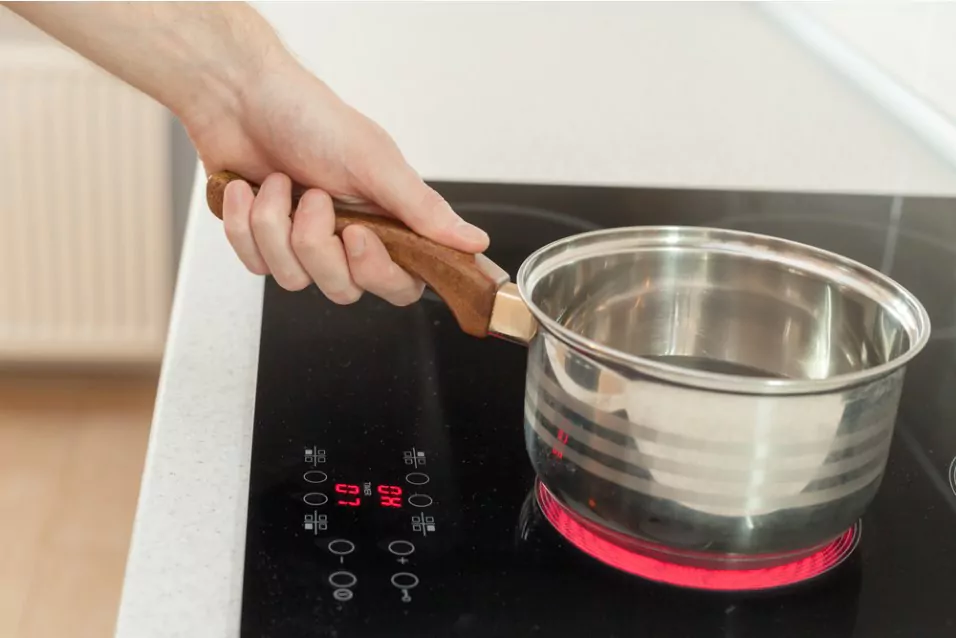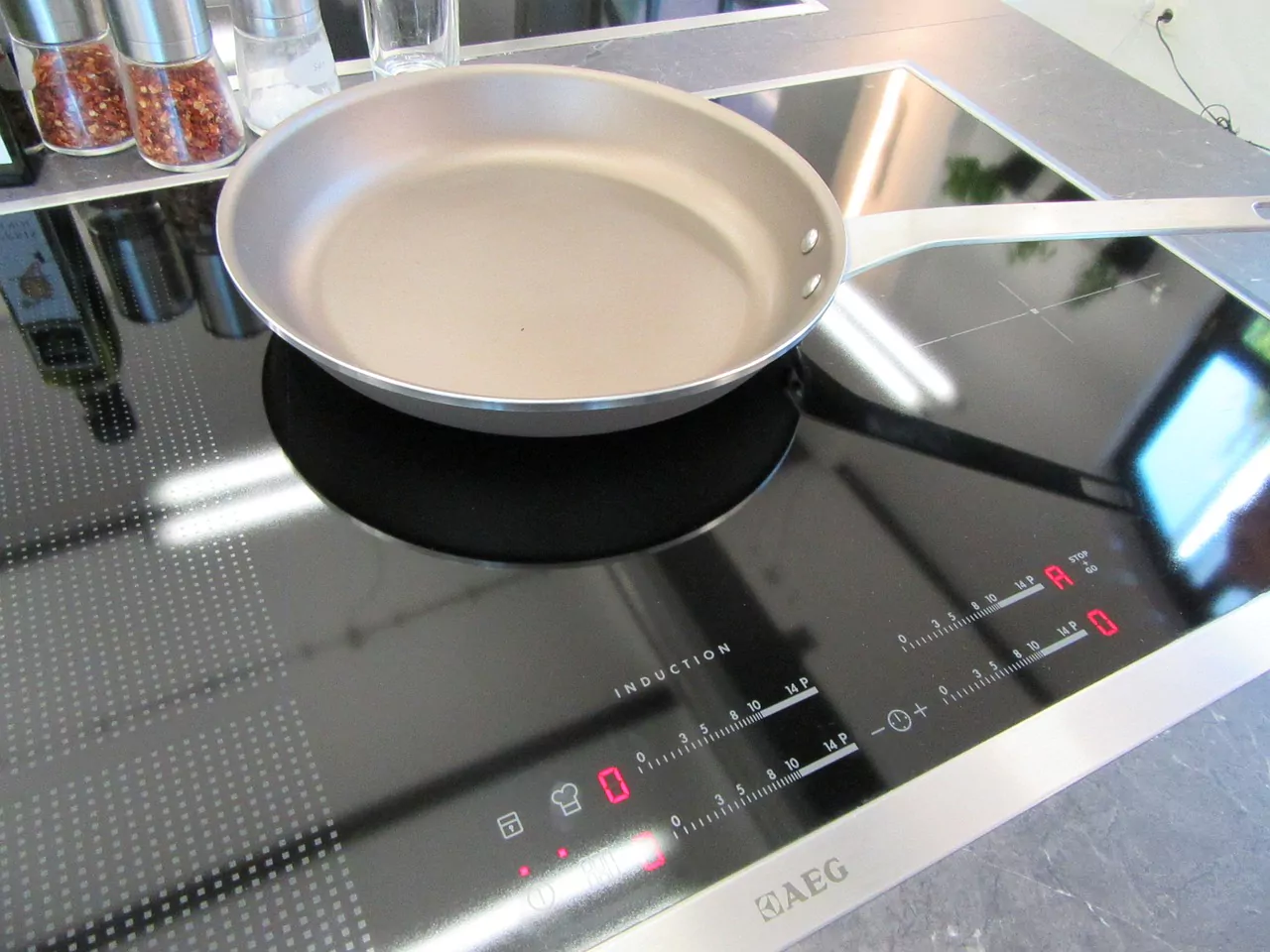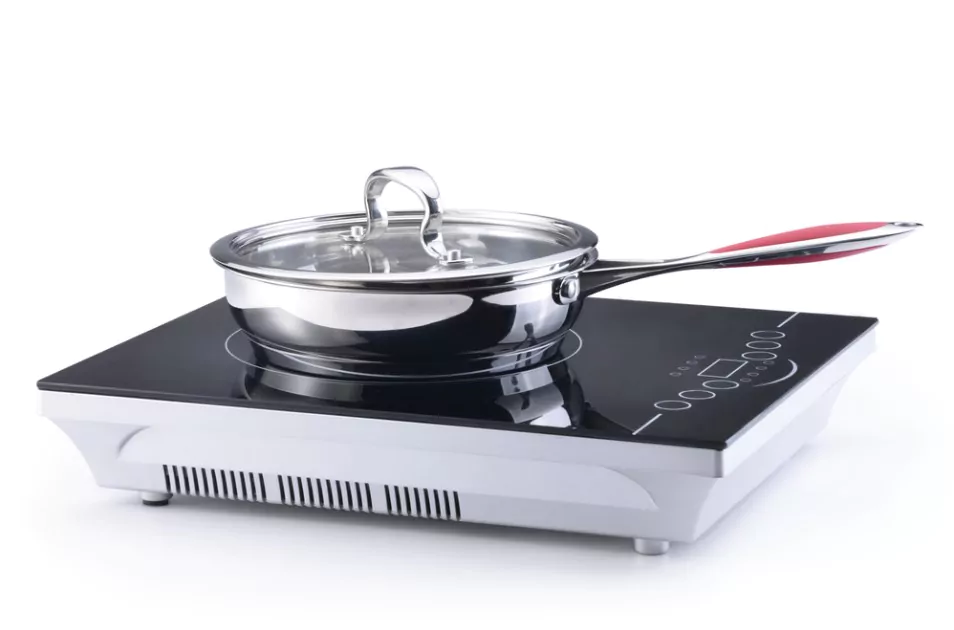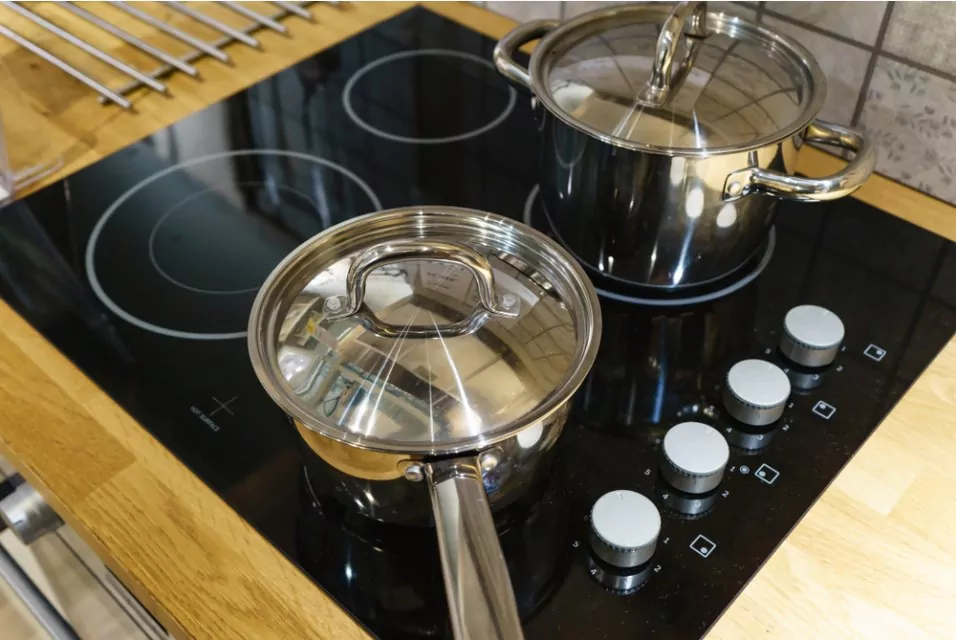All About Induction Cooking – Working Principle & Uses

The art of cooking dates back thousands of years since the existence of human beings. Without learning the art of how to cook, we as humans would not have survived for generations. Although cooking technology and energy efficiency have advanced, there has been no decline in its development. Nowadays, every household has a microwave, but very few of them are aware of the existence of induction stove and induction cookers.
Induction cooking produce heat using electromagnetism. Electromagnetic induction converts the cooking pan into an induction cooker, which allows food to be cooked faster, safer, and with less power.
In this article, we’ll find out exactly what is induction cooking equipment, how they work, and whether they’re better or worse than most electric cooktops or gas cooktops.
1 How does Induction Cooking work?

In contrast to cooking with natural gas, induction cooking works by energy transfer from electric current. With induction cooking, heat is transferred from the cooking vessel directly to your food in the cooking vessel, eliminating the intermediary that can occur with gas and electric appliances.
Induction cooking works due to the fluctuating magnetic field which directly heats the cookware, instead of heating the cooktop surface and then transferring that heat to the cookware. The cooktop has an electromagnetic coil that generates a magnetic field when an electric current passes through it. When a ferromagnetic material like cast iron or stainless steel pot or pan is placed on the cooktop, the magnetic field induces an electric current in the metal of the cookware, which creates heat and cooks the food. The cooktop surface remains cool because the heat is generated directly in the cookware, and not in the cooktop itself.
2 What are Induction Cooktops?

With an induction cooktop, you simply cook by using an electromagnet. In contrast to the gas and electric cooking method, where the heat energy is transferred from the flame to the pots and pans to heat food, induction cooktops directly heat the cooking pot by heating the induction cooking surfaces with the help of coiled copper wire underneath. With this method, you don’t need an open flame or burner to cook, unlike thermal conduction. Due to the lack of a separate heating element, an induction cooktop can heat cookware more quickly than any other.
An induction stovetop transfers currents directly between magnetic induction cookware above and the electromagnetic field beneath a glass cooking surface. Cookware on the appliance surface is heated via electromagnetism, providing precise temperature control and rapid rises or drops. Heating is typically faster when the temperature is controlled by a temperature sensor, especially when performing more time-consuming tasks such as boiling water.
3 How does an Induction Cooktop work?

An induction cooktop works with the help of magnetic coils to heat the cooking pan directly, while the cooktop surface remains cool to the touch. An electromagnetic coil below the cooktop surface generates a magnetic field that induces an electric current in the metal of the cookware. This in turn produces heat transfer within the cookware, which is then used to cook food with the induction hob. Unlike ceramic cooktops, induction cooktops are made of toughened glass, which is easy to clean.
To cook with an induction cooktop, follow these steps:
- Check cookware compatibility: Not all pots and pans are suitable for induction cooking. To check whether your cookware is compatible, place a magnet on the bottom of the pot or pan. If the magnet sticks, your cookware is suitable for induction cooking.
- Place cookware on the cooktop: Place the compatible cookware on the cooktop. Make sure it is centered over the electric coil to heat evenly.
- Turn on the cooktop: Turn on the induction cooktop using the controls. Select the desired heat setting and cooking time.
- Begin cooking: The cookware should begin to heat up quickly. Start cooking your food as you would with a traditional stovetop.
- Adjust heat as needed: You can adjust how much heat is needed during cooking by using the cooktop controls.
- Turn off the cooktop: When cooking is complete, turn the cooktop off and remove the cookware. The hot surface of the cooktop should cool down quickly as the heat is generated in the cookware and not the surface.
Note: Be sure to follow the manufacturer’s instructions for your specific induction cooktop.
4 Advantages of Induction Cooking
- Energy Efficiency: Induction cooktops only heat the cookware, not the surrounding area, making them more energy efficient.
- Speed: Induction cooktops heat up faster than gas or electric stovetops.
- Safety: Since induction cooking only heats the cookware and not the surrounding area, it is safer compared to gas or electric stovetops.
- Precision: Induction cooktops allow for precise temperature control, making it easier to cook delicate dishes.
- Easy to clean: Since the surface of the cooktop only heats up when a compatible pot or pan is placed on it, spills and splatters are less likely to stick and burn onto the surface, making it easier to clean.
5 Disadvantages of Induction Cooking
- Compatibility: Induction cooktops only work with only metal that is magnetic such as stainless steel or cast iron. Non-magnetic cookware such as aluminum or glass surface will not be compatible with induction cooktops.
- Cost: Induction cooktops and compatible cookware can be more expensive than traditional gas or electric stovetops and cookware.
- Learning curve: Induction cooking is a different experience from traditional cooking methods, and it may take time to learn the nuances of using an induction cooktop.
- Limited power: Some induction cooktops may not be powerful enough to meet the demands of professional kitchens or serious home cooks.
- Interference with other electronics: Induction cooktops can generate electromagnetic interference that can disrupt other electronics in the kitchen, such as radio or television signals.
- Noise: Contrary to gas cooking, induction cooktops may make a scurry or fussing sound when in use, which can be noticeable and distracting.
6 Wrapping Up
Induction cooking is highly energy efficient and works by the principle of fast heating using a magnetic field produced with electrical current. Investing in an induction cooktop can take you out of your comfort zone from cooking with a traditional cooktop into a whole new world of cooking.
FAQs about Induction Cooking
What are the disadvantages of induction cooker?
1. The cost of induction cooktops and cookware can be higher than that of gas or electric stovetops and cookware.
2. Stainless steel and cast iron are the only metals that are magnetic that can be used with an induction cooktop.
3. Some induction cooktops might not be strong enough to cope with the demands of professional kitchens or serious home cooks.
4. Cooktops with induction coils can generate electromagnetic interference that disrupts other electronics in the kitchen, such as radios and televisions.
Which technology is used in induction cooker?
An induction cooker works on the principle of magnetic induction. Rather than using a flame or an electrical heating element to heat a cooking vessel, induction cooker heats the cooking vessel by electrical induction. When the vessel is placed on top of the induction stove, it comes in contact with the copper coils placed under the ceramic plate of the induction stove.
Is induction cooked food safe?
Yes, any recipe cooked with an induction cooker or induction stove is completely healthy to eat. Just be careful not to touch the heating surface of the induction stove.
What are the steps of induction cooking?
1. Check cookware compatibility
2. Place cookware on the cooktop
3. Turn on the cooktop
4. Begin cooking
5. Adjust the heat as needed
6. Turn off the cooktop after cooking
Community Q&A
About This Article
This article has been viewed 620 times.



